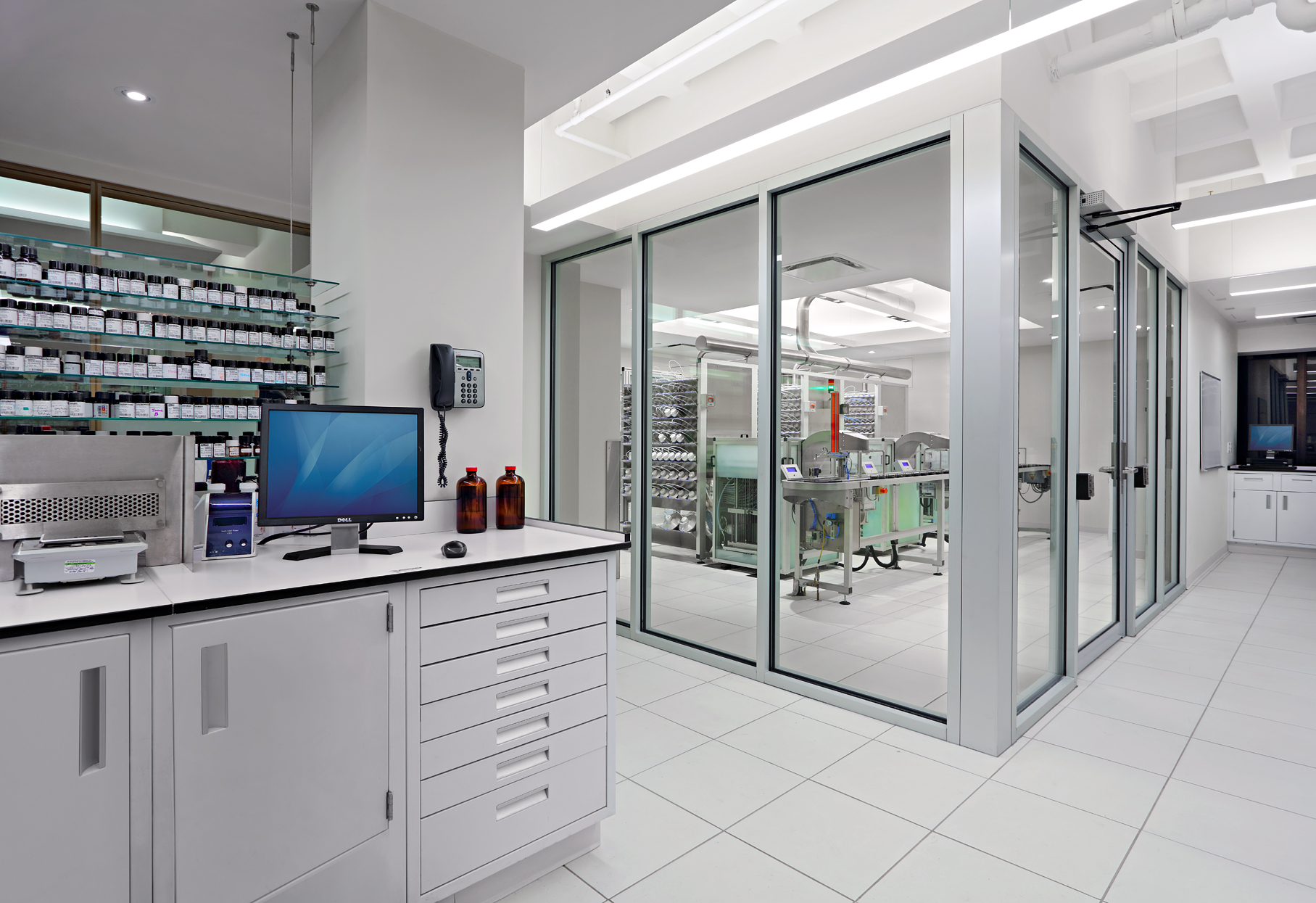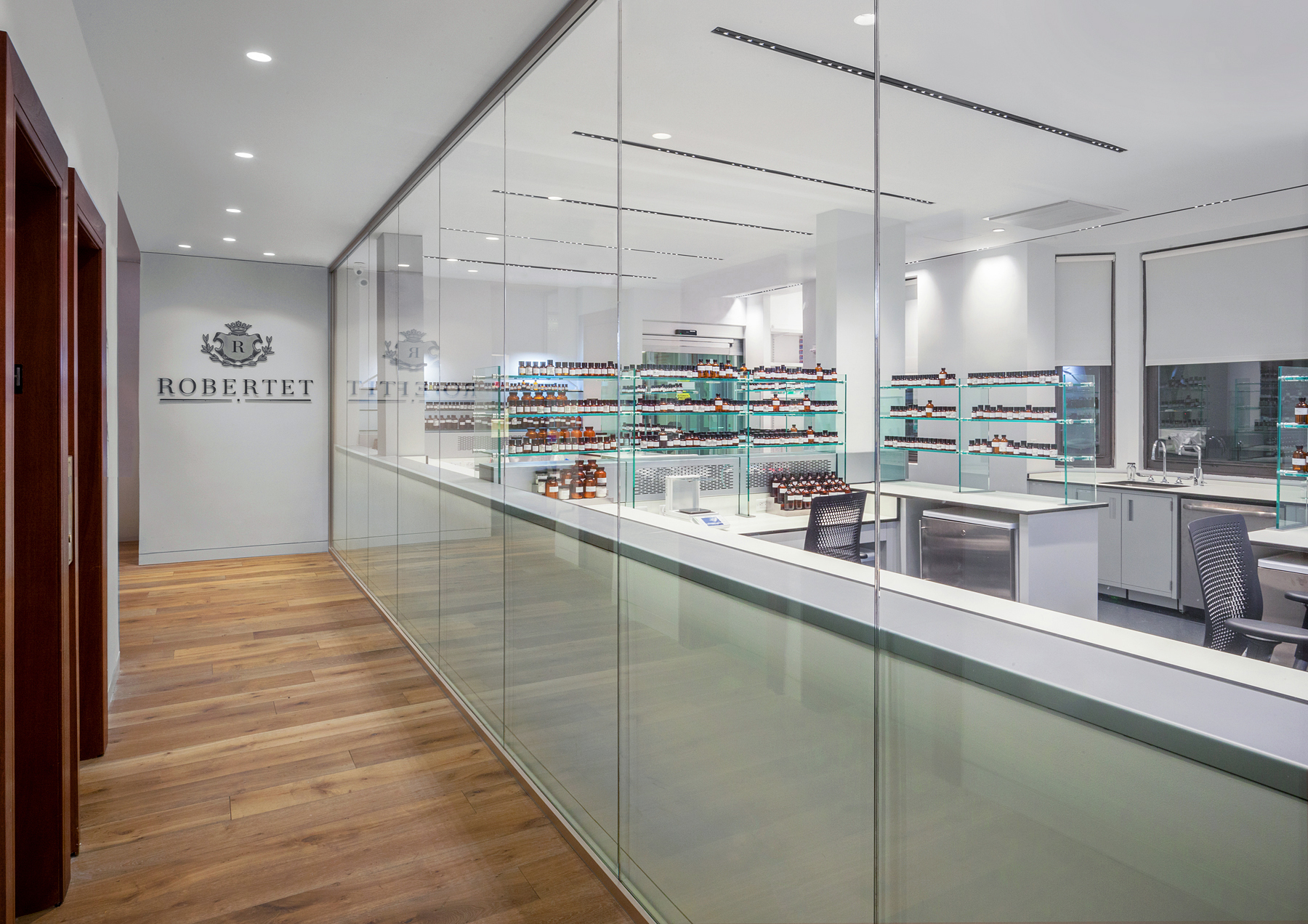Life Sciences Growth Offers Development and Repositioning Opportunities
Commercial and industrial real estate markets are undergoing a transformation. Many employees have been seeking a remote work environment for several years and COVID-19 shutdowns have accelerated this trend, which will likely lead to a decrease in demand for commercial offices. The life sciences and consumer goods market sectors (LSCG), in contrast, are booming and promise long-term growth and stability. The sector represents a significant opportunity for property developers and owners to increase revenues.
“Researchers, technicians, and product managers require company-operated spaces with continuous access to labs, driving space leasing demand,” says Steven Andersen, principal of Montroy Andersen DeMarco (MADGI), a New York City-based interior design firm with an extensive portfolio of design projects for life science, flavor and fragrance, and consumer goods research clients. “However, facility requirements for LSCG spaces are complex, and careful planning is required to determine the cost and anticipated return on investment from retrofits of buildings that were originally designed for different uses,” he cautions. Tenants in the LSCG sector have specific property needs, including enhanced structure, robust utilities and ventilation, backup power, and around-the-clock operation.
Location and Zoning
Perhaps the most important factor in selecting a potential LSCG property is its location. According to Jonathan Andrew, managing director at Gardiner & Theobald, a construction and property consultancy and owner’s representation firm, “Many LSCG tenants want to be located near academic and medical facilities to enhance collaboration with industry colleagues and to develop business opportunities. Another important location factor is proximity to transportation hubs, which provide accessibility for investors, collaborators, and employees. Freight car access is also crucial for firms relying on rail transportation for raw materials and shipping of finished products.”
Another reason to consider proximity to academic centers is that university professors frequently create start-ups to bring their projects into the commercial sector and staff the new labs with students or recent graduates who have ties to the university. Similarly, independent labs can also provide testing and support functions for nearby hospitals.
As the LSCG industry has grown, municipalities across the country have started to develop technology hubs to encourage incubators and startups. For example, in 2016 New York City launched LifeSciNY, a $500 million, 10-year plan to establish New York City as a global leader in the commercial life sciences that includes financial incentives. To date, some 500,000 square feet of new research space has been constructed in Manhattan. Although it can be challenging to convert high rise floor plans into lab spaces, New York City has unparalleled access to researchers and academic institutions. Suburban areas, however, often offer buildings with wider floor plans and that can be less costly to convert to LSCG use than high-rise structures in urban locations.
LSCG industries are evolving, which impacts the types of real estate they seek. “Many large pharmaceutical companies are outsourcing research work to independent life sciences biotech firms,” says James Walsh, senior associate, NorthStar Owners Representation, who has an extensive background in the pharmaceutical industry. “Many of these firms grow rapidly and seek real estate that already offers the systems and layouts that support their operations.”
Former industrial and low-rise commercial buildings are ideal for repositioning to the LSCG industries. The large floor plans, high floor loads, and sufficient space for additional building systems allow for the labs and offices to be located in adjacent spaces, making intra-company communication and interactions easier. Zoning regulations vary significantly between urban and suburban locations and are a crucial component of project planning. “It is important to confirm local zoning allowances for lab footprint restrictions, hazardous materials and storage, and loading dock facilities,” advises Andersen. “Zoning also needs to be studied to determine parking availability and the potential for future facility expansion.”
Floorplate and Building Structure
Important determinants in selecting space for LSCG conversion are floorplate size and structural system capacity. Spaces must be sized to accommodate not only people, but also mechanical and other equipment, manufacturing processes, storage, shipping, and waste handling. Office building floors are typically designed with a combined dead and live load capacity of between 125 pounds per square foot (psf) and 150psf. Biotech facilities, in contrast, require a capacity of 200psf to 300psf or more to support the weight of heavy equipment and storage. Slab-on-grade is the most cost-effective way to accommodate this heavier loading, and previous warehouse or industrial buildings are well suited for conversion.
Multi-story office buildings, on the other hand, will likely require structural upgrades. According to Andersen, “One possible strategy for the conversion of high-rise buildings is to designate strengthened floors that can be leased by multiple tenants for laboratory uses. The floors above can then be used for administrative functions.”
Freight elevators and access to loading docks are essential for LSCG facilities. Landlords may need to either enlarge existing freight elevators or add new ones. Laboratory spaces are heavily loaded with ductwork and plumbing that need to run above the ceilings. “To permit a finished ceiling height of 9- to 10-feet, a clear minimum height of 14-feet from floor slab to underside of the slab above is ideal, although lower clearances of as little as 12-feet are possible with creative ceiling design,” says Andrew.
Mechanical, Electrical, and Plumbing Infrastructure
Research facilities require robust MEP systems. Lab ventilation requires 6 to 12 air changes per hour, depending on the lab’s classification, an increase over the more standard office rates of two to four changes per hour. Dedicated exhaust shafts with customized filtration need to be provided for odor booths and for fume hoods. Rooms may need to be negatively pressurized so that people and products in the surrounding areas are not contaminated by airborne particulates. Humidity controls are often essential to protect research and products. All of these factors lead to larger duct risers, resulting in a decreased net to gross floor area factor.
In MADGI’s recent project for fragrance and flavor developer Symrise in Manhattan, a split HVAC system creates negative air pressure inside the lab space and other positive zones within the office space that prevent odors from escaping out of the fragrance lab. Pressurization and odor control was also critical to the success of another MADGI project to create a Manhattan fragrance laboratory for The Robertet Group, a French fragrance and flavor manufacturer. Existing mechanical units were used for the office spaces, but a new separate HVAC system was installed for the lab and odor booths that provides 12 air changes per hour and draws air across the mixing counters to pull odors away from the work areas.
LSCG spaces generally have a heavy plumbing demand as well. Labs utilize many sinks, driving an increase in wastewater capacity. In addition, central systems for the distribution of compressed air or vacuum are often required, as are cold rooms or cryogenic reactors. Alcohol-based liquids, chemicals, and gasses are integral compounds used in LSCG facilities. The safe handling, disposal, and transportation of lab waste are of utmost importance. Acid neutralizing systems can be centrally designed to contain waste from one or more labs. Labs need to be fire rated and fire sprinkler systems must be designed to meet code requirements.
Finally, LSCG facilities require increased and redundant electrical power and back-up generators to support lab robots and other equipment that may run around the clock, as well as to protect the integrity of long-term research projects. Power back-up is critical to maintaining continuous operation of equipment that supports long-term studies for research projects. Roof mounted HVAC units, connected to vertical chases, offer the most efficient way to provide controlled ventilation to individual tenants. Landlords can allocate enhanced vertical infrastructure for future tenant use in advance, so that construction disruptions are minimized for existing tenants. Higher rents can be demanded for spaces with access to these intense utilities.
The Future of Research and Laboratory Real Estate
Research tenants will be increasingly sought after by landlords, which will lead to owners providing additional amenities and systems as value added services. “The more a landlord can provide, the more the prospective tenants will be interested in leasing the space. 24-hour operation and security are some of these potential amenities and services,” advises Walsh.
“Similar to other industries, the LSCG research and operations workplaces will require and increased amount of collaboration spaces, flexible areas dedicated to employee wellbeing and rest, increased air purification outside of the lab, and more focus on control and quality of the overall environment, including lighting, shading, temperature, and water and air quality. This trend should be taken in consideration when planning both conversions and new research facilities,” adds Andersen.
Due to rapidly developing technologies and varying real estate type and space availability, the functions of facilities operated by the LSCG industries in urban and suburban locations will likely vary in the future. Laboratories operating in urban locations will prioritize the use of virtual or digital technologies to create the ideas and samples of the products or pharmaceuticals, while suburban laboratories will serve as locations for the physical creation of those items. This will drive down the costly upgrades and space needed in the cities, while still offering urban locations that attract the top talent, collaborators, and clients.
Source: Lab Manager Magazine / Photo Credit: Peter Dressel/Wilk Marketing Communications



NYREJ’S 2024 Ones to Watch Industry Leaders: MDA Job Captain, Mateusz Slapinski
New York Real Estate 2024 Ones to Watch Industry Leaders Spotlight: MDA Mateusz Slapinski, Job Captain, Montroy DeMarco Architecture “Mat is one of the impressive young leaders within our firm’s architecture and interior design studios. He leads his projects...

Morgan North’s Architectural Design Team Honored at NYCxDesign 2024 Awards Ceremony
The Architectural Design Team for Morgan North was honored at the NYCxDESIGN 2024 Awards ceremony. The redevelopment and adaptive reuse of the Morgan North Post Office was recognized for its outstanding architectural planning, interior design, and landscape...

The Redevelopment of the Historic USPS Morgan North Receives 2024 Project Profile Award by Commercial Construction & Renovation (CCR) Magazine
Morgan North, New York, New York Designer: Montroy DeMarco Architecture LLP, Shimoda Design Group, HMWhite (Landscape Architect) Contractor: Urban Atelier Group The expansive, 645,000 SF Morgan North redevelopment by Tishman Speyer transforms what was once New...
